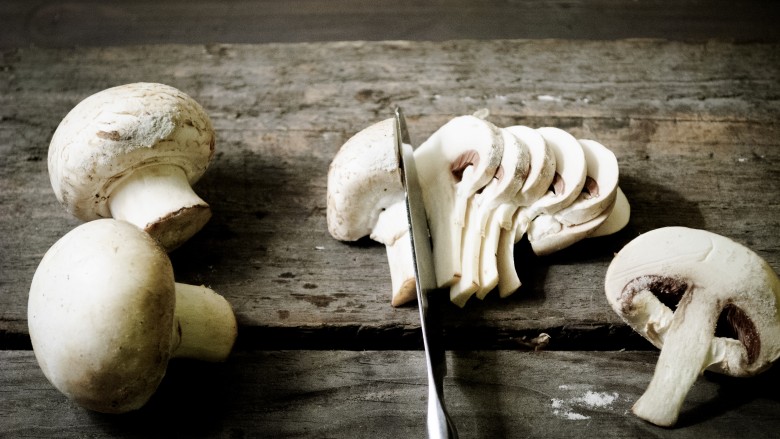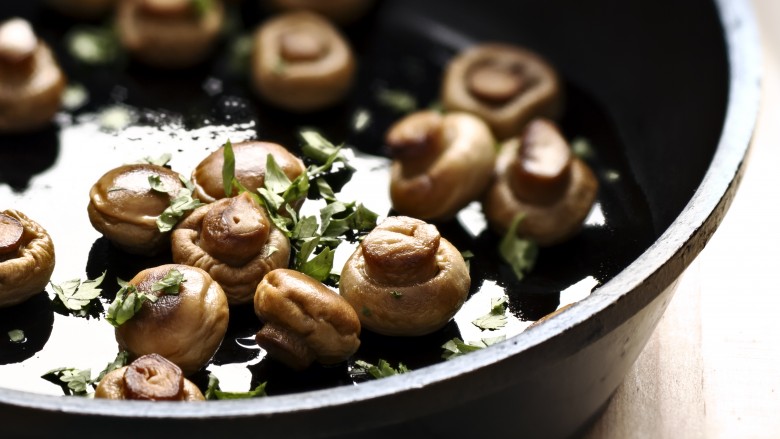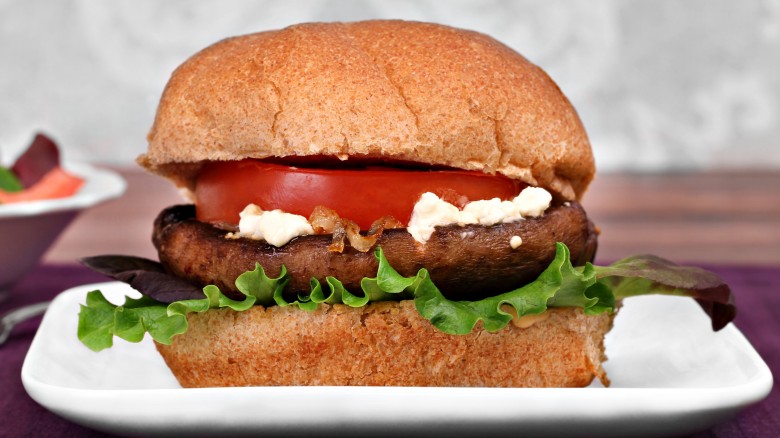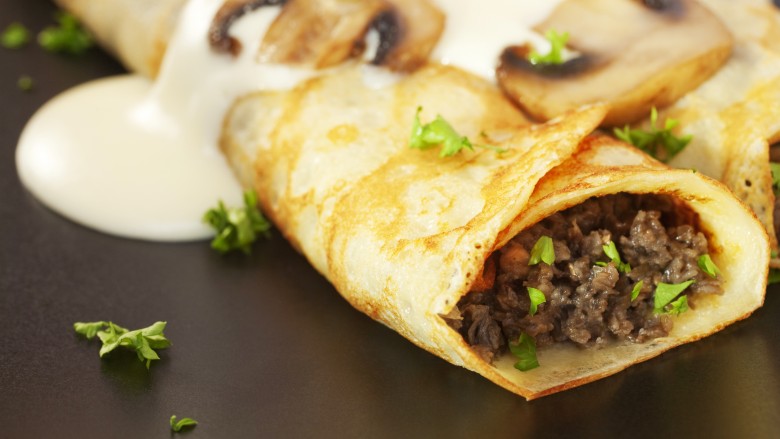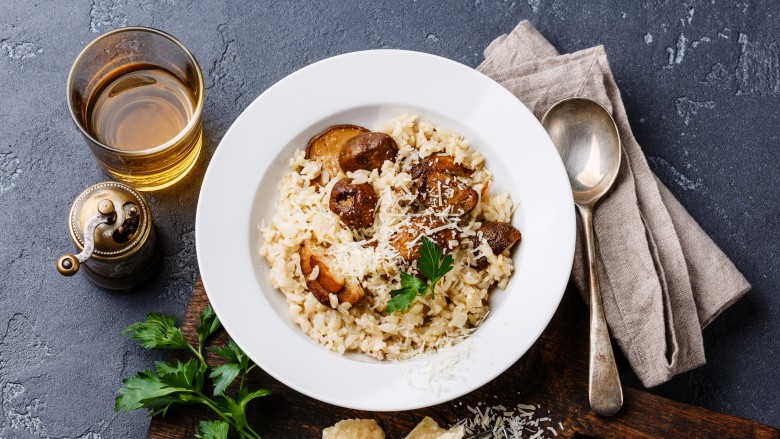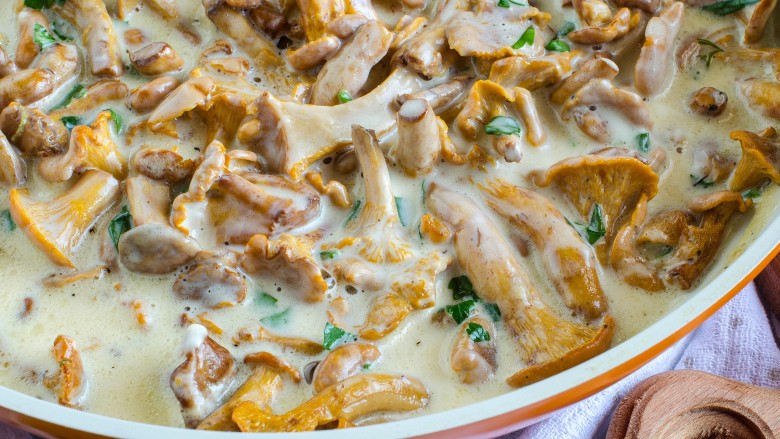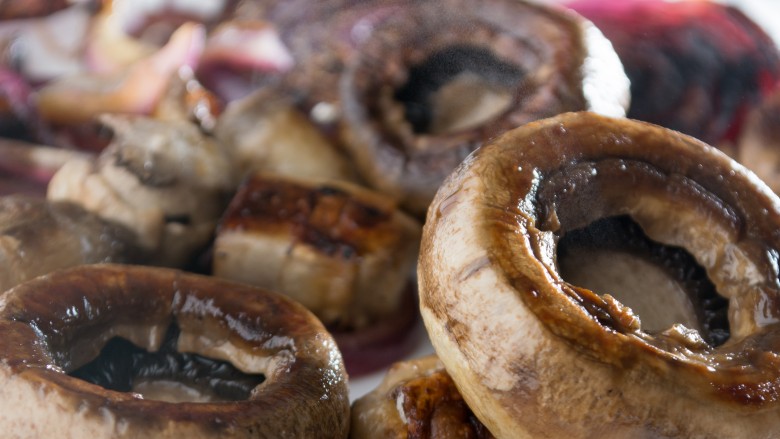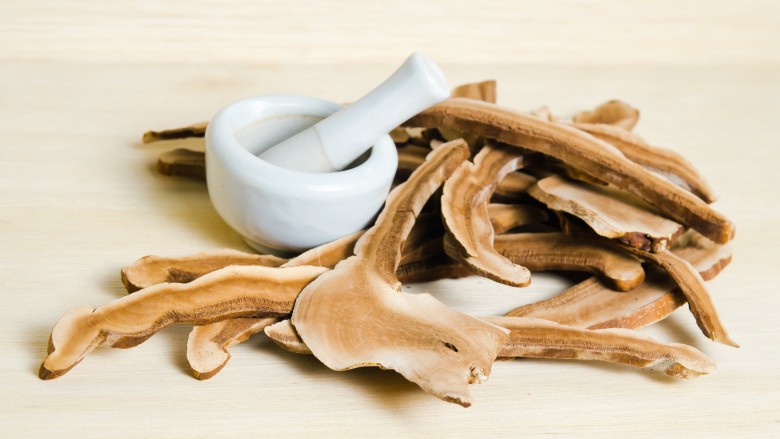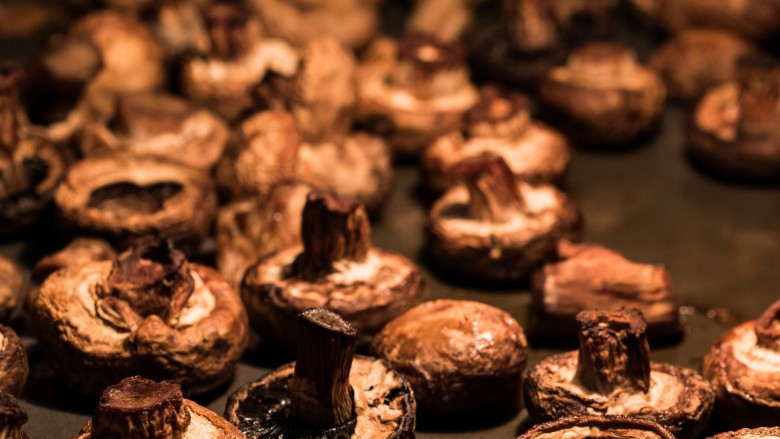The Best Ways To Cook With Mushrooms
Some people love them, and some people hate them, but there's no denying the fact that mushrooms are an incredibly versatile ingredient. They can hold their own as the main event of a meal or take a backseat while still bringing earthy nuances and rich meaty flavor to a dish. The health benefits of mushrooms alone make them ingredients worth including on your weekly shopping list, and that's if you don't factor in the delicious taste. They're fat-free, gluten-free, and rich in vitamin D and potassium. All this means that even if you think you don't like mushrooms, you may just have never had them cooked correctly before. Trust us, the right method makes all the difference with this finicky fungus.
These tips will help ensure you make the most out of your delicious mushrooms, instead of reducing them to a rubbery, chewy mess.Are you ready to make some mushroom magic? Read on!
How to use raw mushrooms
Sometimes not cooking a mushroom is the best thing you can do for a dish. Certain varieties like mild and crunchy little enoki mushrooms are delicious when sauteed, roasted, or simmered in a soup, but they're just as special served raw in a simple salad with green onions. Cultivated white button mushrooms may seem somewhat ordinary, but sliced very thin for a mushroom carpaccio they drink up the flavors of the herbs, oil, and lemon juice they're sprinkled with and are elevated well beyond their everyday status. You won't even realize the core component is one of the more inexpensive mushroom varieties you can buy. The mushrooms in both of these dishes are technically raw, but the acidic vinegar and lemon juice they are dressed do a little "cooking."
Sauteeing mushrooms
So you just brought home some fresh mushrooms. Maybe you picked up cremini (aka baby bellas) or shiitakes, and you plan to saute them along with your steak dinner. Great plan! Everything begins well enough. You rinse the mushrooms (because it's a myth that mushrooms can't be cleaned with water), blot them dry, and slice them a little thick so they'll still have a nice meaty bite when they're finished cooking. But somewhere between the moment they hit the pan and the mushrooms get on top of that steak, something goes wrong. They don't have any caramelized edges and even worse, when you bite into the mushrooms, the texture is reminiscent of rubber. Let's make sure that doesn't happen again.
Sauteed mushrooms aren't hard to do, but you need three things in place: a searing hot pan, a thin layer of oil to coat the pan, and only as many mushrooms as can fit in that pan without crowding it. A hot pan will quickly sear a crust onto each of the mushroom slices. If you cook them slowly and with less heat, mushrooms (which are largely water) will release their juices and boil rather than fry in the pan. The same goes for an overcrowded pan. Sauteing can't happen if there isn't enough room for the steam to quickly evaporate. Take those steps and you'll have the mushroom pan sauce of your dreams.
Grilling mushrooms
Large portabello mushrooms can get grilled much the same way a cut of chicken or a steak does for a great mushroom burger. Before you begin, marinate the mushroom caps or brush them lightly with oil to create a protective layer that will help seal in the moisture. (Don't use the stems, they're too tough to eat.) Season the mushrooms with salt and pepper and then grill, turning after the first side has developed a light char and the mushrooms begins to soften. Portabello mushrooms are hearty but they aren't as resilient as a slab of meat. Handle with care as you turn them — tongs will make the task go smoothly. Grilling smaller whole mushrooms can be precarious; they'll shrink as they lose moisture and could potentially fall through the grates. Thread small mushrooms onto a skewer for peace of mind. This will make turning a cinch and allow you to check that all sides of the mushrooms are fire-kissed and evenly cooked.
Using mushroom as a filler or stuffing
Because their umami flavor and texture are reminiscent of meat, mushrooms make great filler for tacos, meatloaf, burgers, and sloppy Joes. If you chop mushrooms to about the same consistency of ground chicken, turkey, beef, or pork, they'll blend right in. That natural compatibility goes a long way to helping you put a healthful spin on favorite dinnertime dishes without causing a revolt at the table. (The kids can see that spinach you tried to hide in those turkey burgers!) With mushrooms, you're adding a veggie that's rich in potassium and vitamin D. To further enhance flavor, you can also roast the mushrooms before chopping and blending them into the meat. Swapping in about 30 percent mushrooms to 70 percent meat is just right for burgers and meatloaf. In French cooking, finely chopped mushrooms cooked with shallots and fresh herbs are called duxelles. The mixture is used in a variety of recipes from stuffed mushrooms to savory mushroom crepes and roasts like beef Wellington.
Using dried mushrooms
Fresh mushrooms don't last that long — about a week if you properly store them. Dried mushrooms, on the other hand, offer up several ways to bring fungi into recipes and have a shelf life of six months to a year. For mushrooms with a limited season like porcini, the dried option is a great way to bring the woodsy, earthy flavor to a classic dish like risotto. There's no argument that the fresh ones are fantastic, but you can rehydrate dried porcini and use the resulting mushroom broth and the soaked mushrooms to flavor the arborio rice as you stir and cook it. Dried mushrooms plump up pretty nicely after they've soaked, but one important thing to remember is that the grit from the mushrooms must be strained out. Do so by straining the broth through a strainer or pour the soaking liquid through a coffee filter. For notoriously sandy mushrooms like morels, rinse them first before soaking to wash away as much grit as possible.
Braising mushrooms
Gently cooking mushrooms (or any ingredient) with a small amount of liquid in a covered pan on the stovetop or in an ovenproof dish or pot in the oven is called braising. You can use water to cook mushrooms this way, but if your braising liquid is wine, juice, or broth, it will flavor the mushrooms as they cook. And as the mushrooms gently simmer, they'll impart their flavor into the liquid. This recipe browns chanterelle mushrooms and Brussels sprouts in butter before they're slowly simmered together with chicken stock. Vinegar and mustard seed balance out the rich braising liquid.
Broiling mushrooms
With the stem removed and the caps turned upside-down, mushrooms are like a little bowl waiting to be filled with something delicious and then broiled until topped with a golden, toasted crust. The stuffing can be as simple as the chopped stems of the mushrooms themselves mixed with breadcrumbs, Parmesan cheese, and herbs, or it can rely on another meaty ingredient like walnuts to fill up the interiors. If you just want to broil mushrooms without stuffing them, try out Madhur Jaffrey's Indian version of broiled mushrooms with green chilies and lime.
Mushroom powder
Dried mushrooms have another great role they can play: as a dusting of flavor after they've been pulverized. You can buy mushrooms already in powder form or you can easily powder them yourself by grinding the dried mushrooms in a food processor. So what should you do with mushroom powder? Use it as a rub for a rich crust on chicken or steak, stir it into mashed potatoes, or sprinkle it onto scrambled eggs. For a change from just salt and pepper, make this mushroom, salt and pepper blend to keep as a condiment at the table.
Roasting mushrooms
Roasting mushrooms is a great way to amplify their natural flavor and certain mushrooms are truly transformed when they're roasted. Hen of the woods or maitake mushrooms are one of those varieties. You don't have to do much to work roasting magic on this mushroom: just break the mushroom into pieces, season with salt and pepper, and drizzle with olive oil before roasting until the edges are crispy. You can also roast whole mushroom crowns for a stunning main dish. Most any variety of mushroom can be roasted. This recipe uses a mix of mushrooms. After the mushrooms are cooked to a tender texture, they're tossed with red wine and butter for a glossy, saucy coating.

